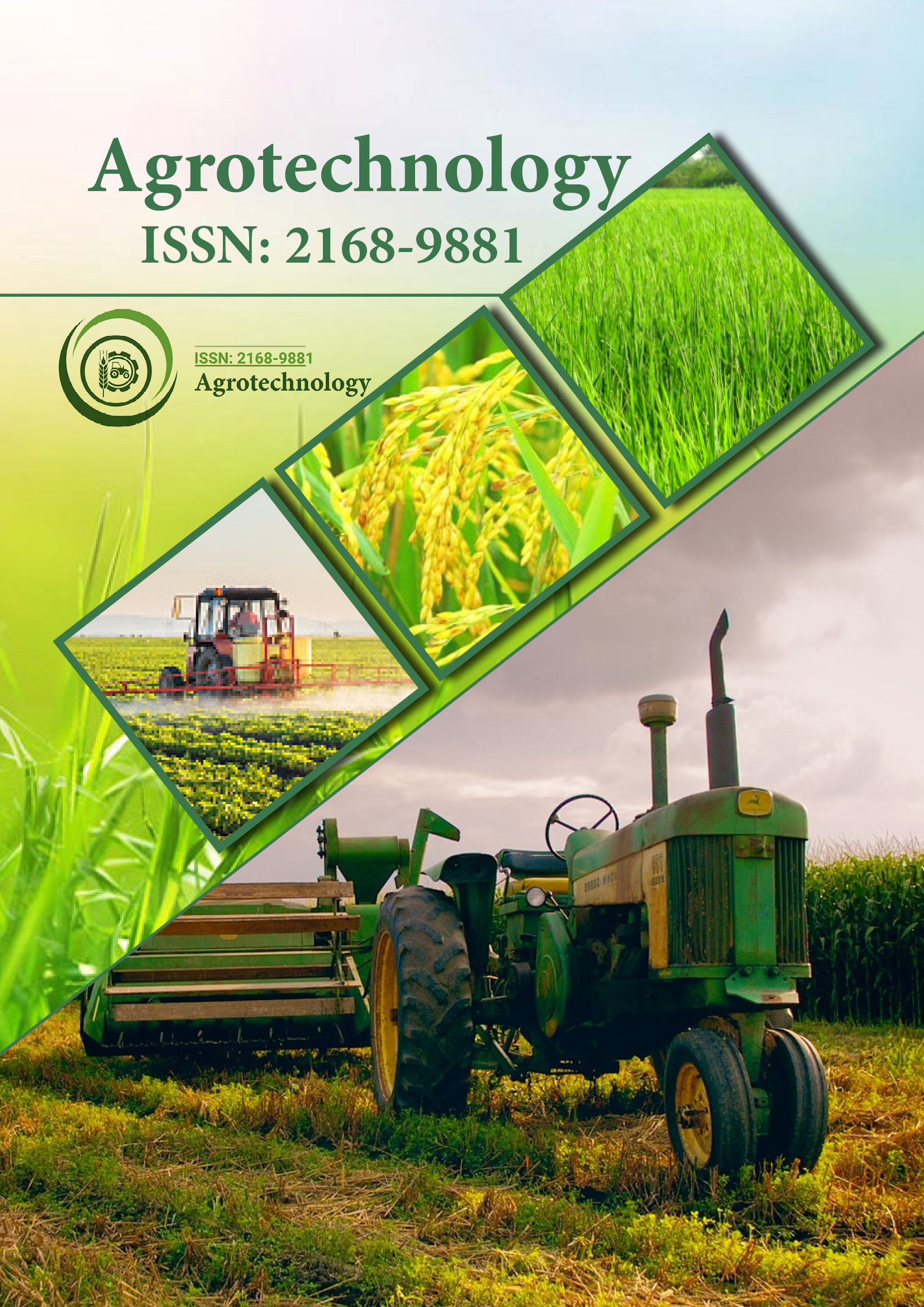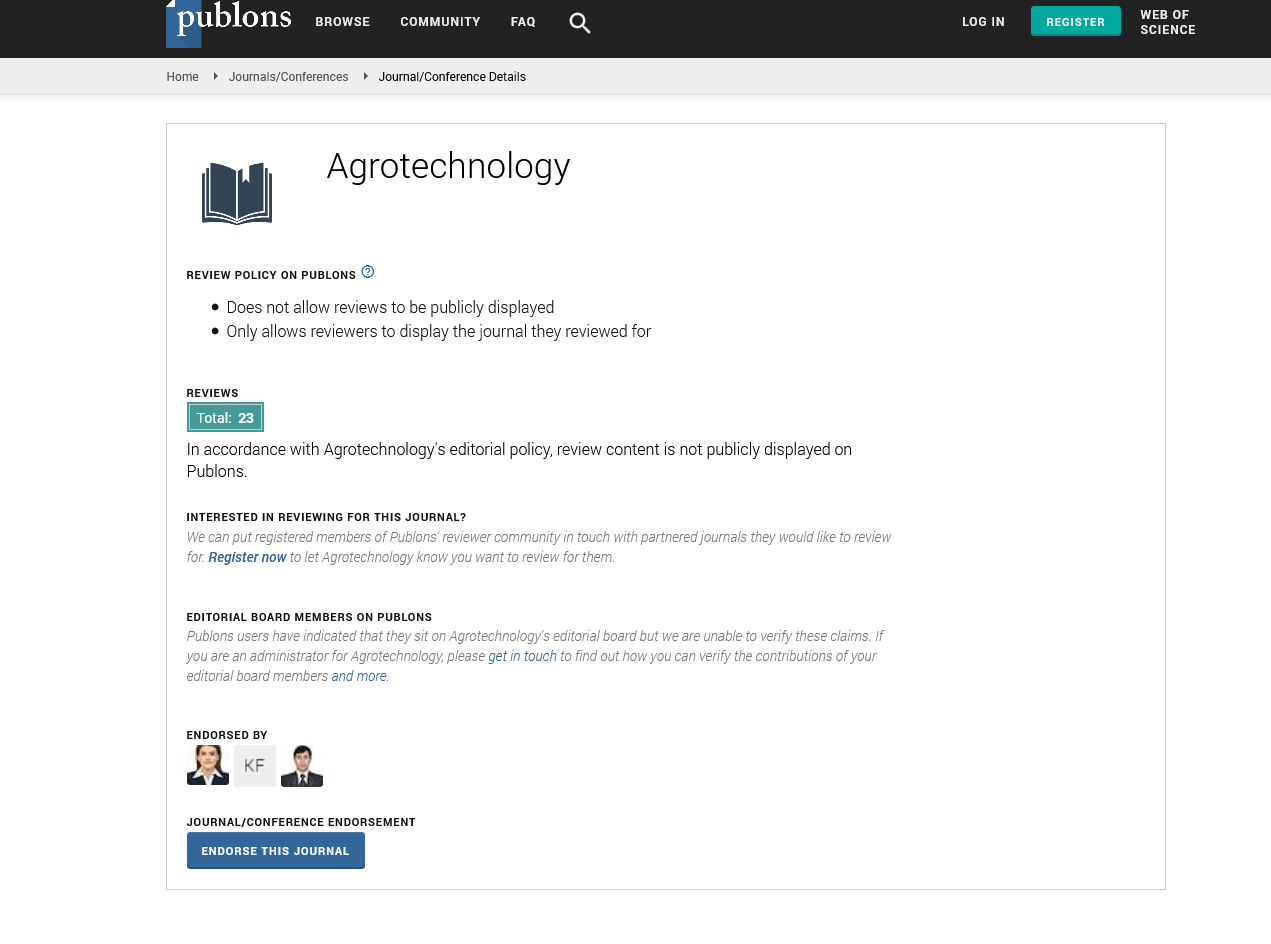Indexed In
- Open J Gate
- Genamics JournalSeek
- Academic Keys
- ResearchBible
- Cosmos IF
- Access to Global Online Research in Agriculture (AGORA)
- Electronic Journals Library
- RefSeek
- Directory of Research Journal Indexing (DRJI)
- Hamdard University
- EBSCO A-Z
- OCLC- WorldCat
- Scholarsteer
- SWB online catalog
- Virtual Library of Biology (vifabio)
- Publons
- Geneva Foundation for Medical Education and Research
- Euro Pub
- Google Scholar
Useful Links
Share This Page
Journal Flyer

Open Access Journals
- Agri and Aquaculture
- Biochemistry
- Bioinformatics & Systems Biology
- Business & Management
- Chemistry
- Clinical Sciences
- Engineering
- Food & Nutrition
- General Science
- Genetics & Molecular Biology
- Immunology & Microbiology
- Medical Sciences
- Neuroscience & Psychology
- Nursing & Health Care
- Pharmaceutical Sciences
Opinion Article - (2024) Volume 13, Issue 4
Climate Change and Agriculture: Challenges to Global Food Security
Karl Felix*Received: 29-Nov-2024, Manuscript No. AGT-24-27400; Editor assigned: 02-Dec-2024, Pre QC No. AGT-24-27400 (PQ); Reviewed: 16-Dec-2024, QC No. AGT-24-27400; Revised: 23-Dec-2024, Manuscript No. AGT-24-27400 (R); Published: 30-Dec-2024, DOI: 10.35248/2168-9891.24.13.391
Description
Climate change has an extensive effect on agriculture, increasing concerns about global food security. Temperature and precipitation systems are changing and extreme weather conditions are becoming more frequent, providing a challenge to agricultural systems that depend on stable environmental conditions. These changes affect crop growth, crops health and total farm production, creating intense worries as to the future availability and stability of food supply. Temperature increases create new challenges for farmers. Many common crops, such as wheat, rice and maize, are extremely subject to extended heat, which alters growth cycles, reduces production and reduces nutritional quality. High temperatures during essential growth stages such as pollination can reduce crop production because plants mature too quickly, decreasing their productive period. This pattern reduces crops, making it more difficult to maintain the increasing need for food. Heat exposure reduces milk supply, slows growth and makes crops more susceptible to disease. These requirements require farmers to make significant efforts to provide enough cooling and health care for their animals.
Shortage of water, caused by climate change, decreases the production of agriculture. Crops require constant amounts of water to realize their full potential; even several areas experience more and more severe shortages. Irrigation systems are essential to crop growth in these places; however, water resources are decreasing and groundwater reserves, which are frequently used as a preserve, are being used more quickly than they can replace. This has a particularly negative impact on water-intensive crops, resulting in slower development and decreased productivity. Crop resistance decreases in the absence of consistent water, resulting in an insufficient food supply and greater agricultural production costs.
Conversely, other regions are grappling with excessive rainfall and flooding, which create their own set of challenges. Heavy rainfall can lead to waterlogged fields, soil erosion and nutrient runoff, all of which reduce soil fertility and damage crop roots. Floods often destroy crops entirely, leaving farmers with substantial losses and less food to distribute. Soil degradation is also a significant issue as erosion strips away the nutrient-rich topsoil necessary for healthy crops. These conditions make it difficult for farmers to recover and maintain consistent productivity across growing seasons.
The spread of pests and diseases is another growing concern exacerbated by climate change. Warmer temperatures and shifting climates allow pests to expand into new regions, attacking crops that previously faced little threat. Likewise, plant and livestock diseases are increasing in frequency, with climate shifts creating conditions that promote the spread of pathogens. Farmers are often forced to use more pesticides and other chemical treatments to protect their crops and livestock, which can lead to additional costs and environmental risks. Over-reliance on chemical treatments also raises concerns about resistance in pest populations, requiring ever-stronger applications to achieve the same protective effects.
Soil health is another critical area affected by climate change, as stable and productive soil is essential for agriculture. Rising temperatures speed up the breakdown of organic matter, diminishing soil fertility. Additionally, the erratic rainfall and drought cycles that accompanies climate change harm soil structure, reducing its capacity to retain water and nutrients. As soil conditions worsen, farmers may increase their use of synthetic fertilizers, which can further degrade the land and impact the surrounding ecosystem over time. Ensuring soil health amid climate fluctuations is essential for maintaining the productivity and sustainability of farming systems.
The pressures that climate change exerts on agriculture also threaten food security by increasing the risk of supply disruptions and price volatility. With crop yields fluctuating and water becoming scarce, food prices may rise, limiting access to affordable nutrition, especially for vulnerable communities. As agricultural systems face these mounting challenges, there is an urgent need to explore adaptive farming practices and sustainable resource management to protect food production and ensure long-term food availability.
In conclusion, climate change is placing unprecedented pressure on agriculture, endangering global food security. The impacts of rising temperatures, altered rainfall, water scarcity, soil degradation and expanding pest threats are disrupting food production systems, making it harder to maintain consistent yields. Addressing these issues requires a collective commitment to adaptive farming practices, innovation in resource management and supportive policies for farmers. By prioritizing sustainable solutions and building resilient agricultural systems, it is possible to navigate these challenges and secure reliable food supplies for future generations.
Citation: Felix K (2024). Fertilizer Optimization Techniques: Improving Soil Health and Effective Plant Growth. Agrotechnology. 13:391.
Copyright: © 2024 Felix K. This is an open access article distributed under the terms of the Creative Commons Attribution License, which permits unrestricted use, distribution, and reproduction in any medium, provided the original author and source are credited.


